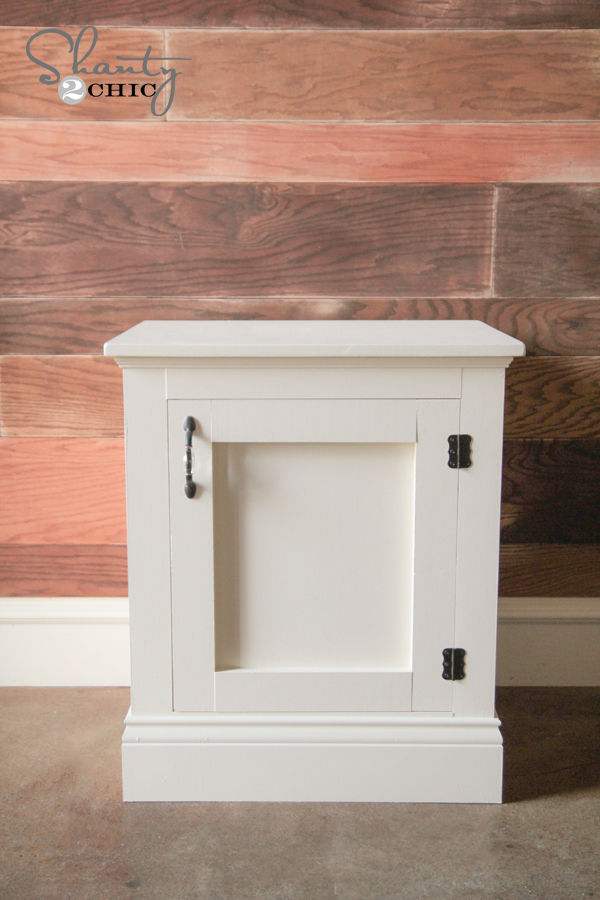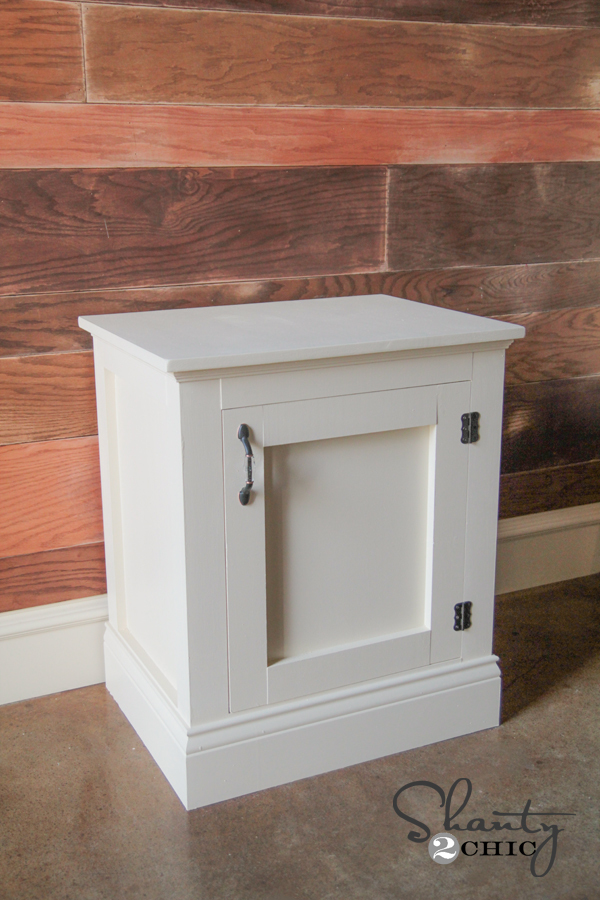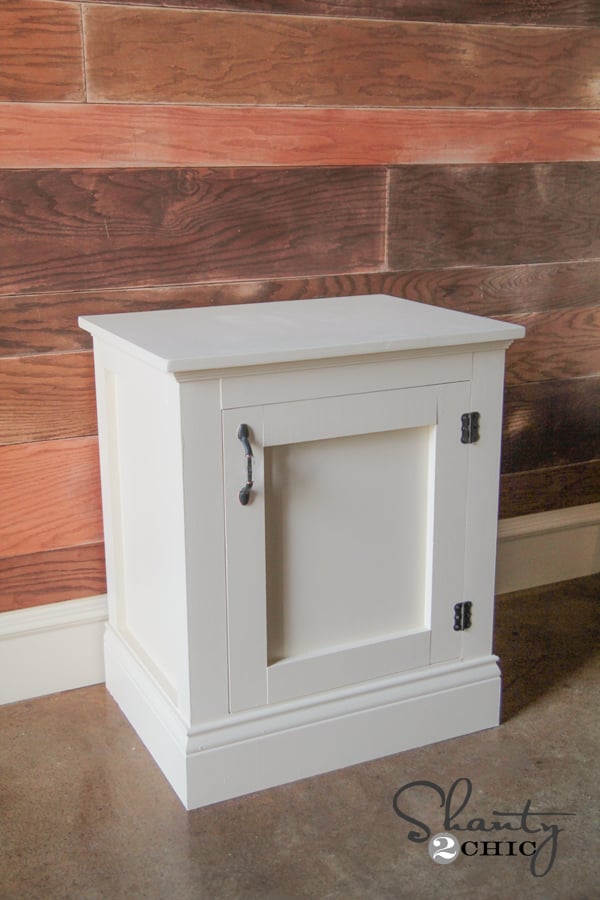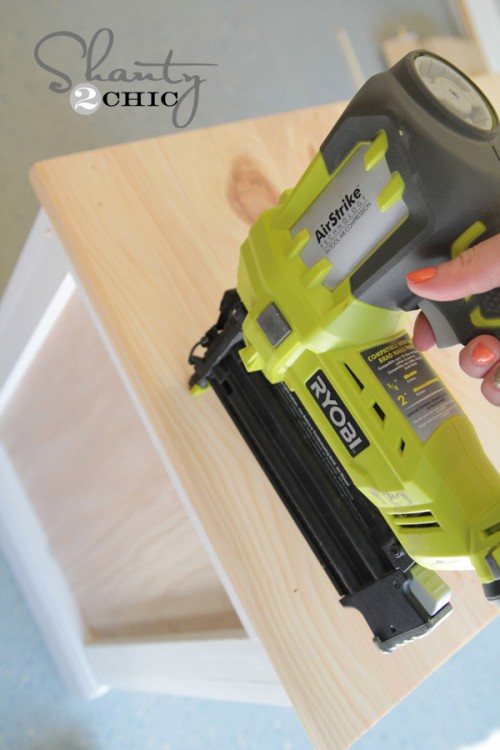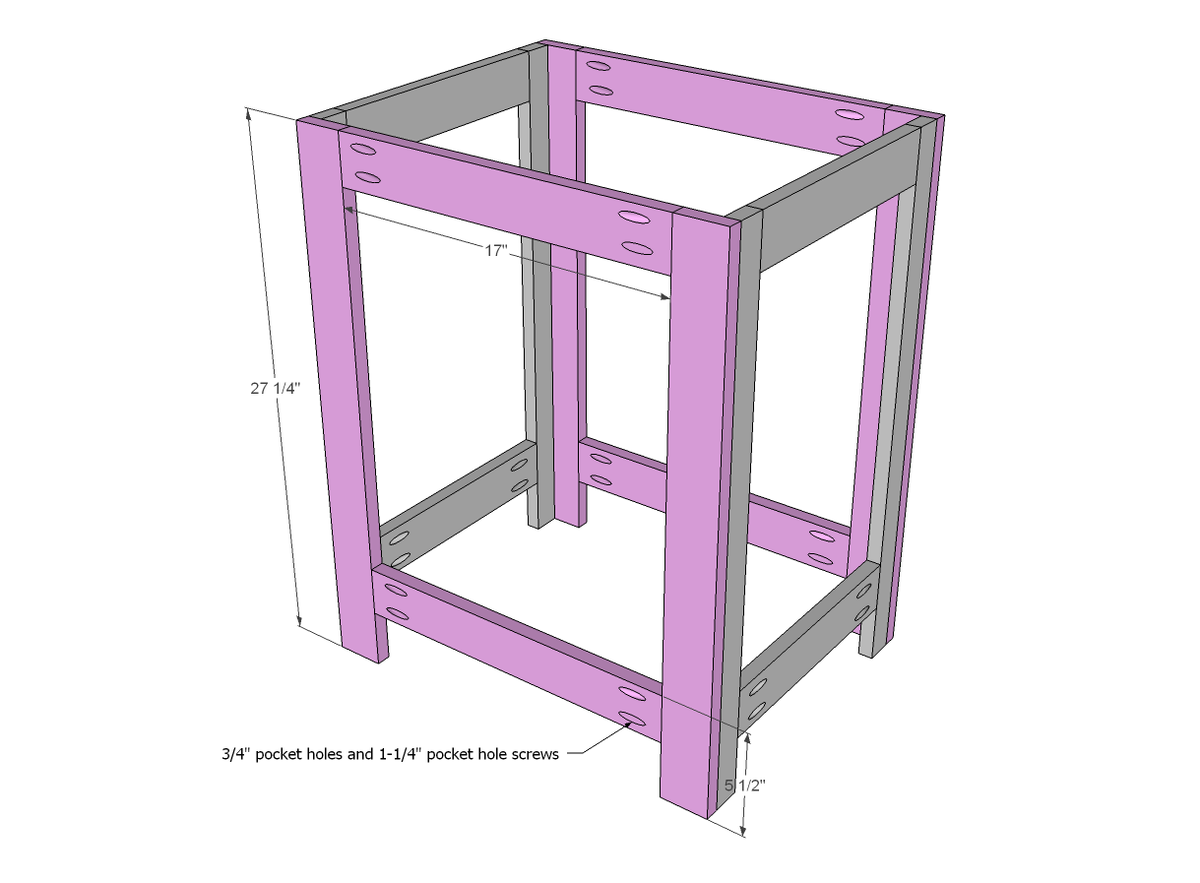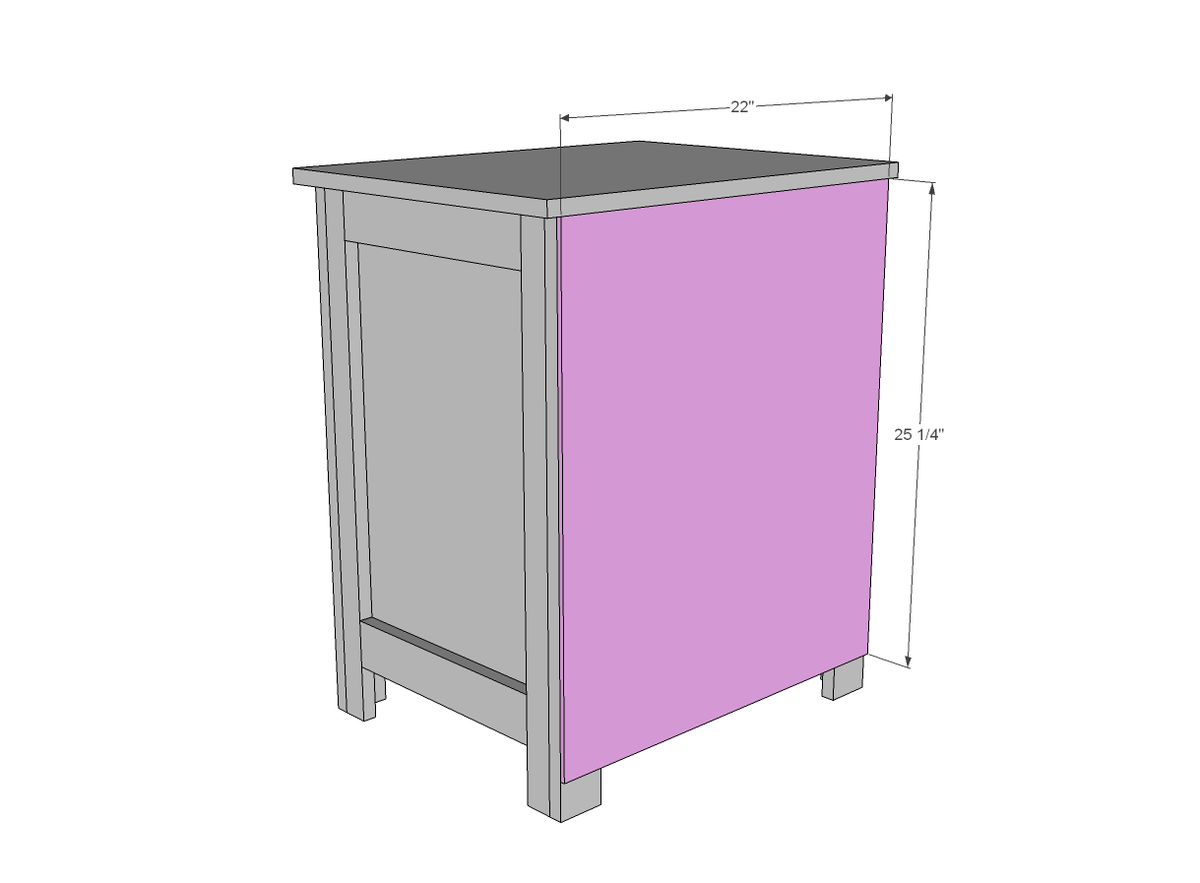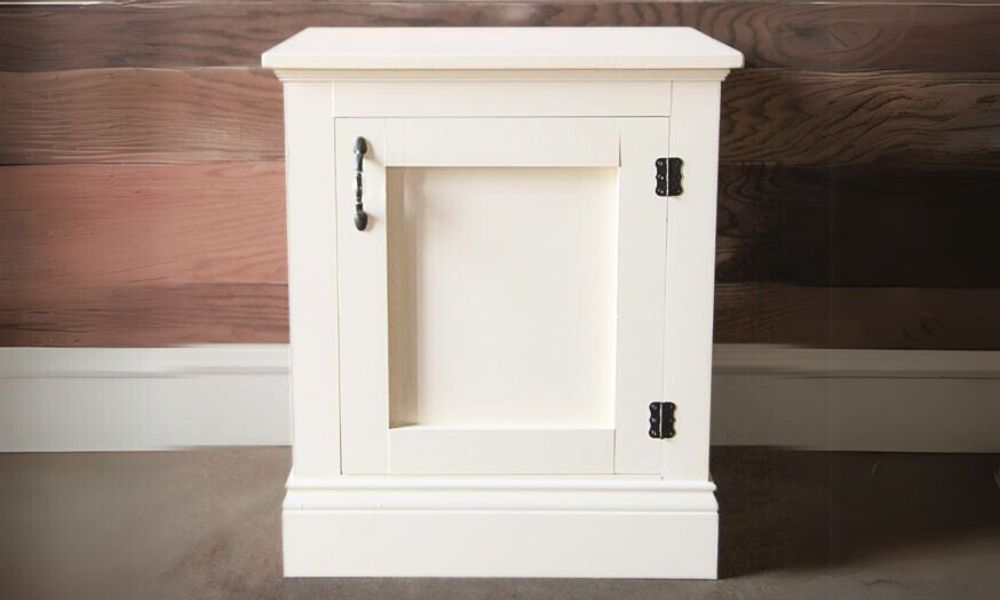
Free plans to build cabinet nightstand or bedside table from Ana-White.com - we love this beautiful nightstand that adds storage!

Preparation
- 1 - 1x2 @ 10 feet long
- 2 - 1x3 @ 10 feet long
- 1/4 sheet of 3/4" plwood (24"x48")
- 1/2 sheet of 1/4" plywood (48" x 48")
- Door not figured in shopping list
- Hinges (suggest full inset wrap hinges or surface mount hinges)
- 6 feet of 5-1/4" base moulding
- cove moulding to dress up top and panels if desired
SIDE FRAMES
- 4 - 1x2 @ 27-1/4"
- 4 - 1x3 @ 12-3/4"
FRONT/BACK FRAMES
- 4 - 1x3 @ 27-1/4"
- 4 - 1x3 @ 17"
BOTTOM
- 1 - 3/4" plywood @ 20-1/2" x 15-3/4"
SIDE PANELS
- 2 - 1/4" plywood @ 15-3/4" x 22-3/4"
TOP
- 1 - 3/4" plywood @ 24" x 18 1/2" (may wish to add edge banding around top)
- BACK
- 1 - 1/4" plywood @ 22" x 25-1/4"
BASE MOULDING
- CUT TO FIT
DOOR - 16 - 3/4" x 19"
Please read through the entire plan and all comments before beginning this project. It is also advisable to review the Getting Started Section. Take all necessary precautions to build safely and smartly. Work on a clean level surface, free of imperfections or debris. Always use straight boards. Check for square after each step. Always predrill holes before attaching with screws. Use glue with finish nails for a stronger hold. Wipe excess glue off bare wood for stained projects, as dried glue will not take stain. Be safe, have fun, and ask for help if you need it. Good luck!
Instructions
Step 2
Step 4
Step 8
Door should be built with 1/8" gap around all sides. Measure and confirm your opening size, and then build the door 1/4" less than the opening. Use inset hinges or surface mount hinges to install doors.

I also love how Whitney built her doors - you can get more details on how she did that here.
It is always recommended to apply a test coat on a hidden area or scrap piece to ensure color evenness and adhesion. Use primer or wood conditioner as needed.


